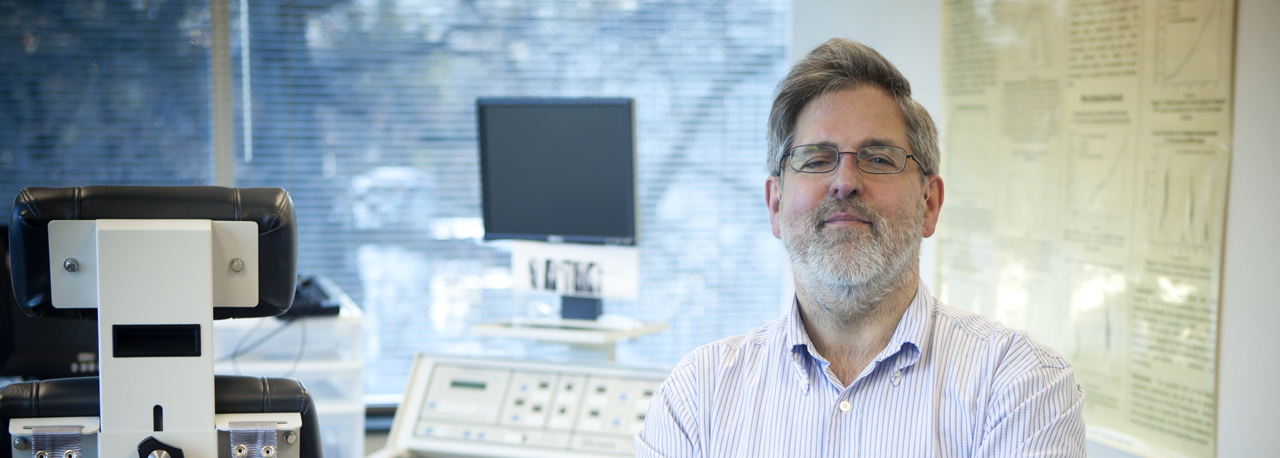Innovation targets body temperature
Courtesy of Binghamton University
Want to lose weight? Install a hot tub in our office, right next to your desk so you can work from it.
If the boss thinks that’s taking casual Friday a bit too far, then consider bioengineer Kenneth McLeod’s alternative.
McLeod, director of the Clinical Science and Engineering Research Center at Binghamton University, is developing a carbon-dioxide, laser-based heater that will keep you hot tub-warm for about 15 watts – a much cheaper alternative to the 1,500-watt space heaters populating the underside of desks all over corporate America.
Furthermore, such a device will make you up to 50 percent more productive at work. That’s because you won’t be getting up to get warm every few minutes.
How does it work? Well, first it’s important to know why it works, McLeod says. You’re gaining weight not because you’re eating too much or not exercising enough, but because your body is too cold, and temperature regulation accounts for two-thirds of the calories you burn.
“Your body has adapted to its environment,” McLeod says. And your environment today is largely air-conditioned: cars, offices, homes, you name it.
Your core body temperature in a typical 68- to 70-degree room is about 98 degrees Fahrenheit. At that temperature, your body produces almost no growth hormone, which regulates whether you burn calories at a higher metabolic rate or store calories in body fat to keep you warm.
But if you rais your core temperature to 100 degrees, your body produces enough growth hormone that you burn fat at a prodigious reate. To reach that body temperature, you’d have to keep your living or working space at 78 or 80 degrees.
How does McLeod know this? He put test subjects in a hot tub for 30 minutes. Those who did it a couple of times per week lost weight. In fact, they lost more weight than people with the same diet who exercised – 1.2 pounds a week for young women and 0.8 pounds for middle-aged men.
But because an office hot tub isn’t practical, and a 1,500 –watt space heater is a huge wast of energy, McLeod is developing a laser-based body heater. Here’s how it works:
Carbon dioxide lasers are already common and relatively cheap. They produce electromagnetic radiation in the 10-micron range – the very lowest end of the infrared spectrum. That wavelength of radiation heats animal flesh, but not the air or items around it.
McLeod mounted a diffuser to a 15- or 30-watt laser-based heater – about as much energy as a compact fluorescent light bulb. The result is something that heats you, but not your desk, computer, air or anything else. The project, is funded by the New York State Energy Research and Development Authority. McLeod also received an investment from the SUNY Technology Accelerator Fund (TAF) to test a prototype.
The first devices will operate much like a space heater tthat you can regulate via remote control. Later devices might monitor skin temperature and regulate themselves to stay within you comfort range.
You could lose weight, increase productivity and save money. “It’s a passive diet plan,” McLeod says. “You don’t have to do a thing.”
comments powered by Disqus


